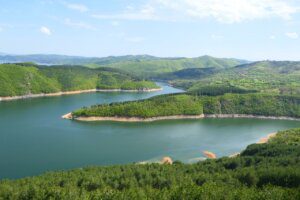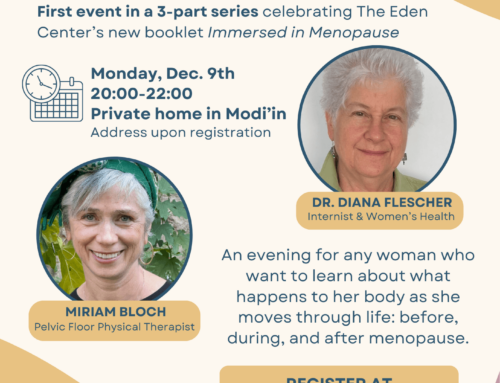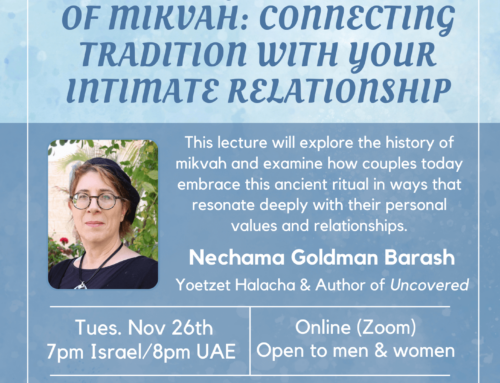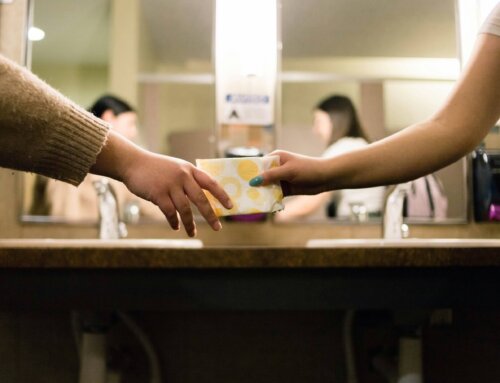 Every Pesach I am struck by the duality of the chag. And I am not the only one– when I look at the shiurim around, I notice that about half of them discuss the minutia of halacha, and about half of them speak of the overarching themes of becoming an am kadosh (Holy nation), and leaving the servitude of Egypt to becoming ovdei (servants of) Hashem.
Every Pesach I am struck by the duality of the chag. And I am not the only one– when I look at the shiurim around, I notice that about half of them discuss the minutia of halacha, and about half of them speak of the overarching themes of becoming an am kadosh (Holy nation), and leaving the servitude of Egypt to becoming ovdei (servants of) Hashem.
Approximately a year ago, this duality inspired me to create the Naharei Eden Chabura (learning group). As I approached fifty years old, it seemed I was emerging from the nitty gritty details of family and work life, and it was time to look at my overall picture, the whole. I asked myself “what is next? What is now?” and I realized that I, along with the Eden Center, could create a chabura program.
We formed a chabura of women ages 45-55 (approximately) who wanted to learn together and learn from one another. Each woman chose a different topic to explore and share with the group. As a guiding principle the chabura set out to look at the overall theme of the interplay between the the details of Judaism – the “pratim” – and our overarching experience – the “klal” – of kedusha (holiness).
As the inaugural year comes to a close, I was asked by a member of the first cohort whether I thought our learning and our program had focused on this interplay. The question spurned me to look at each topic presented and consider the question.
But then I realized that there is no need to try to fit each person’s chosen topics into a pre-constructed frame.
The overall Chabura, Naharei Eden, itself fits this frame so well.
Let me explain. Each woman presented a topic of her choice, some avenue she wanted to further explore through Jewish sources. We each prepared source sheets or power points to present to the group, and then led a discussion based on the sources. I can tell you from my own experience that the process of developing one’s chabura is very detail oriented. I thought of my topic from angle after angle. I searched through the Tanach, meforshim (Biblical commentators) and outside texts. I sat at home, on the plane, and in coffee shops with my thoughts taking me down one avenue after another. Sometimes it seemed everything I read led me to some other idea to pursue. I even once accosted (too strong a word?) a scholar known for her tanach teaching because she had the luck to be sitting outside the coffee shop where I was working on Emek Refaim. (I took out a theory I was pondering and asked her what she thought. I then quickly let her go back to her coffee. She was very indulging and forgiving.)
Others who presented told me similar stories, how their topics engaged them, to the degree that for weeks – maybe even months – they thought about and explored what they would like to say. It is not that the process involved so much work; rather, the pursuit of the topic was exciting and energizing.
These are the pratim. How does one piece together a topic, find sources and references, and put their thoughts together in a coherent way to teach, share and think with others.
So what is the kedusha? The coming together of ten women, each with her own story, background and experiences, to share Torah– is the kedusha. Sharing with each other, and getting to know each other, across time zones and countries– is the kedusha. Setting aside time to be inspired, to learn and explore- is the kedusha. Coming together to listen and engage with someone else as the active recipient of their learning– is the kedusha. Delving into personal reflections and experiences with a safe group of respectful women – is the kedusha. Hearing the discussions and the questions, the engagement and yes, even the respectful disagreements– (especially disagreements!) – is the kedusha. Being a part of a group of women who believe that anything can be discussed through the lens of Torah– is the kedusha. Reflecting upon the experience of creating, learning, and sharing Torah with others in a way that many had not had a chance to do for some time as we built our families and careers – is the kedusha. Hearing from the majority of participants who presented that they valued this experience of learning and presenting their original thoughts and want to continue to learn and join cohort 2– is the kedusha.
When we say that the whole is greater than the sum of its parts, we can look at a chabura like this and know that is true. Naharei Eden is named for the four rivers in Gan Eden. Rivers carry water from place to place. We are each a carrier of Torah, of thoughts, perspective and experiences. Each of us is a tributary coming together in this chabura.
These ten individual women, who obviously had these capabilities separately, came together to join in such a kadosh (holy) way that elevated their learning, their sense of community, and most of all their sense of themselves in Torah.
We look forward to creating cohort two of the Naharei Eden Chabura. There are still a few spots left; we are looking for women who are at this stage in life, and are looking to engage in their learning in a renewed way, and can commit to being a part of this monthly program. For more information please contact Karen Wasserstein kjwass@msn.com or check out our parameters of participation and express interest at theEdenCenter.com/chabura








Leave A Comment